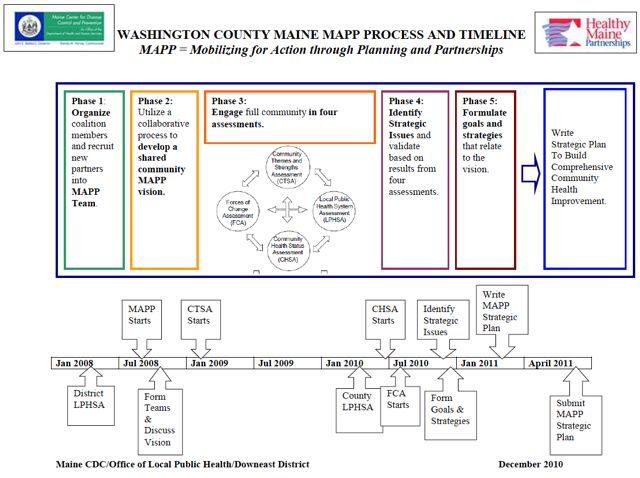 Washington County Public Health Initiatives
Washington County Public Health Initiatives
Washington County Public Health Assessment
Some Challenging Statistics
Washington County has high rates of poverty and low incomes across the region they are acutely felt among elderly and Native American residents. In addition, the adult population shows high rates for obesity, diabetes, asthma, heart disease, lung disease, and several forms of cancer, which is reflected in associated high rates of hospital utilization and mortality. Download Washington County Health Needs Assessment Data from the University of New England Center for Community and Public Health for 2010 here.
The amount of regular exercise and fruit and vegetable consumption among adults and youth is average among Maine counties. However these rates are low relative to public health guidelines and the fraction of adults with a sedentary lifestyle is abnormally high. Daily intake of sugary beverages by high school and middle school youth are the highest among Maine counties, a plausible contributor to our high relative rates for overweight and obesity. The county rate of accidental deaths is disturbingly high for both vehicular and non-vehicular categories. Infectious disease indicators point to relatively low county rates of incidence.
The adult and youth populations show inordinately high rates for smoking and binge drinking, despite progressive declines over the last decade. Misuse of prescription drugs is relatively high among the adult population, though the rate of opiate abusers receiving treatment in the last 5 years is increasing. Misuse of prescription drugs by high school youth remains a problem; though it is average among other Maine counties.
And Constructive Community Responses
Coordinated by the Healthy Maine Partnership organization, Washington County: One Community, Washington County is completing a public health improvement plan. It is the product of the MAPP process: Mobilizing for Action through Planning and Partnerships - depicted in the graphic below. MAPP involves several years of extensive outreach among dozens of stakeholders (individuals and agencies) throughout the County through surveys, research and numerous public meetings. It includes a vision; four community assessments (Themes and Strengths, Health Status, Local Public Health, and Forces of Change); and identification of strategic issues, goals, and an action plan. Download all documents comprising the Washington County Public Health Improvement Plan here.

MAPP yielded the following highest priority goals for Washington County:
- All Washington County residents will have access to a full continuum of affordable health care services – implementation measures include expansion of telemedicine and support of community/volunteer networks.
- Washington County residents will have access to healthy lifestyle options – implementation measures include increase options, infrastructure and access to healthy local food as well as increasing opportunities for physical activity.
- Washington County will reduce/prevent/manage substance abuse - implementation measures to increase awareness of impacts and provision of healthy alternatives.
There are well-established organizations and networks that constitute the Healthy Communities work team who are working on the Action Plan for all 3 Goals.
Goal #2 coincides directly with the Promotion of Healthy Communities work of the GROWashington-Aroostook regional planning initiative. Local Food in Washington County is a growing and vital part of our economy. Efforts are centered on:
Hosting the Washington County Food Summit which has a 3-way focus on Food Security, attracting farmers to Washington County and the development of food hubs that will improve our processing, storage and distribution capacity.
Washington County Community Health Improvement Plan
Stakeholders, Introduction, MAPP Overview, Phase I - Service Area, Phase II The Vision
Phase III Community Assessments
- Community Themes and Strengths Report
- Community Health Status Summary
- Washington County Local Public Health Assessment
- Forces of Change Report

Share this content: